Forget-Me-Not Troubles: Problems With Forget-Me-Nots In Gardens


Growing forget-me-nots can be a walk in the park if you know what signs of danger to be on the lookout for. Even though these plants have few problems, there’s always a risk of fungal disease or insect pests, so read up on the most common issues of forget-me-nots you’ll see in the garden. Whether you’re having forget-me-not troubles or are simply preparing for the worst, this article will help you find the results you want.
Common Forget-Me-Not Problems
A robust stand of forget-me-nots is a truly remarkable sight, but that picture perfect image doesn’t simply happen by accident. Awe-inspiring forget-me-nots are the product of a grower who is intimately familiar with the common problems with forget-me-nots, from fungal disease to pest insects. Although forget-me-nots are generally pretty tough once established in the landscape, that doesn’t mean that they’ll never have a problem. Luckily, most pests and diseases of forget-me-nots are pretty simple to control. Keep an eye out in the garden for these common forget-me-not pests and diseases for the best success with forget-me-nots: Aphids. The sooner you catch these small, soft-bodied sap-suckers, the easier they are to get rid of, so inspect your plants regularly. They look a bit like tiny potatoes and don’t move once they start feeding on the undersides of plant leaves. A regular spray of water or manually wiping them from plants can control aphids adequately. Watch for ants that might be farming these aphids, since they can reestablish a colony quickly. Strategically placed ant baits can help control the tiny farmers. Potato flea beetles. These seed-like black beetles feed on the undersides of plant leaves, causing significant discoloration and death to foliage, but aren’t considered serious pests of forget-me-nots. You can avoid inviting flea beetle pests into your stands by covering young plants with row covers until they’re established. Slugs and snails. Of all the garden pests out there, slugs and snails have a special kind of notoriety about them. They can seem unstoppable, but they’re actually quite easy to arrest if you plan well. Go out at night and check your forget-me-not stand to ensure that the damage is coming from either slugs or snails. With a positive identification made, you can start hand-picking them if the stand is small, being sure to dunk the pests in a bucket full of soapy water as you find them. Longer-term control can be achieved by planting aluminum pie pans around your plants and filling them with cheap beer. Slugs and snails don’t need a microbrew; they’re happy to jump in and spend their last nights soaking in the cheap stuff. Make sure to clean traps in the morning and reset until you’ve gone several nights without any new slugs or snails in your trap. Crown rot. If your plants are starting to wilt and die and you notice thin cobweb-like threads on their bases, you’re probably dealing with Sclerotium delphinii. This serious fungal pathogen will destroy any forget-me-not it comes into contact with, so dig and destroy all affected plants and those that are immediate neighbors if you hope to control the spread. Clean your tools carefully to ensure you don’t spread any spores that lead to crown rot. Infested soil should be destroyed when possible, or covered in clear plastic until the following spring to ensure the spores are adequately halted. Other fungal diseases. Powdery mildew, leaf spots, rust and downy mildew are also common, but simple, problems of forget-me-nots. For these pathogens, make sure the area has plenty of good air circulation, remove all dead plant matter and treat with a fungicide like mancozeb or thiophanate-methyl as soon as signs appear.
Gardening tips, videos, info and more delivered right to your inbox!
Sign up for the Gardening Know How newsletter today and receive a free download of our most popular eBook "How to Grow Delicious Tomatoes."

Kristi Waterworth was a regular contributor to Gardening Know How for many years, answering countless queries on plant pests and diseases.
-
 Urban Composting Guide: How To Compost In The Middle Of The City
Urban Composting Guide: How To Compost In The Middle Of The CityUrban composting does not have to be daunting. You can compost in the city, and maybe even try some urban worm composting!
By Mary Ellen Ellis
-
 Shrub Diseases And Pests To Watch Out For
Shrub Diseases And Pests To Watch Out ForShrub diseases and pests can be challenging. Learn how to recognize and eradicate them before they can present a danger to your plants.
By Susan Albert
-
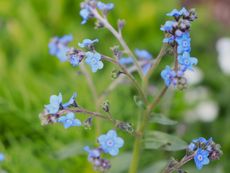 Chinese Forget-Me-Not Care And Characteristics
Chinese Forget-Me-Not Care And CharacteristicsChinese forget-me-nots make beautiful accents in the garden, but they can be invasive. Learn more about this pretty little plant.
By Mary Ellen Ellis
-
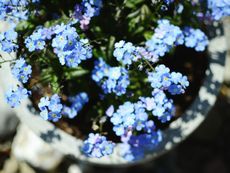 Forget-Me-Nots As A Houseplant – Growing Forget-Me-Nots Inside
Forget-Me-Nots As A Houseplant – Growing Forget-Me-Nots InsideIt is definitely possible to grow forget-me-nots as a houseplant, either during the winter or year round. Click this article to learn how.
By Mary H. Dyer
-
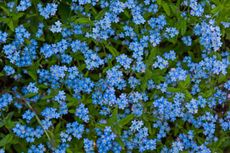 My Forget-Me-Nots Won’t Bloom: How To Fix A Forget-Me-Not With No Flowers
My Forget-Me-Nots Won’t Bloom: How To Fix A Forget-Me-Not With No FlowersForget-me-nots are iconic flowers in the garden and easy enough for even the beginning gardener to see a lot of success in a short time. Unfortunately, they can also be fussy if they're too far out of their comfort zone and may refuse to flower. Click here to learn more.
By Kristi Waterworth
-
 Are Forget-Me-Nots Edible: Tips For Eating Forget-Me-Not Flowers
Are Forget-Me-Nots Edible: Tips For Eating Forget-Me-Not FlowersDo you have forget-me-nots in your landscape? Have you ever wondered "Can I eat forget-me-nots?". After all, there are sometimes hundreds of the plants, or at least there are in my yard. Click this article to find out if forget-me-nots are edible.
By Amy Grant
-
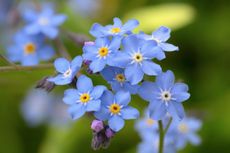 Dividing Forget-Me-Nots: Should Forget-Me-Nots Be Divided
Dividing Forget-Me-Nots: Should Forget-Me-Nots Be DividedShould forget-me-nots be divided? This really depends upon what variety you are growing. If your plant comes up every year in the same spot, it is likely a perennial; but if the plant seems to migrate and multiply in other areas, it is the self-seeding annual. Learn more here.
By Bonnie L. Grant
-
 Forget-Me-Not Companions: Plants That Grow With Forget-Me-Nots
Forget-Me-Not Companions: Plants That Grow With Forget-Me-NotsThe forget-me-not is a popular and pretty late spring to early summer bloomer beloved by gardeners. The flowers don't last long, though, so you need to know what forget-me-not companions will grow well with them and provide continuous blooms. Learn more here.
By Mary Ellen Ellis
-
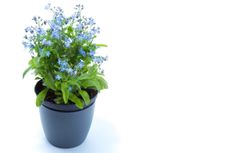 Potted Forget-Me-Not Care: Growing Forget-Me-Not Plants In Containers
Potted Forget-Me-Not Care: Growing Forget-Me-Not Plants In ContainersGrowing forget-me-not in a pot is not the typical use for this pretty little perennial, but it is an option that adds some visual interest to your container garden. Use containers if you have limited space or if you want to grow the plant indoors. Learn more here.
By Mary Ellen Ellis
-
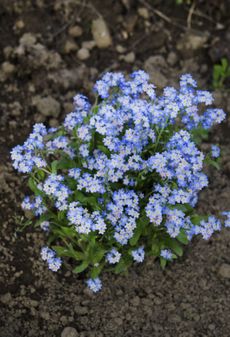 Forget-Me-Not Seed Planting: Best Time To Plant Forget-Me-Not Seeds
Forget-Me-Not Seed Planting: Best Time To Plant Forget-Me-Not SeedsPlanting forget-me-nots from seeds is rarely necessary because they are rampant self-seeders. If you want to introduce the plants to new territory, know when to plant forget-me-nots to ensure success with these easy little plants. This article will help.
By Bonnie L. Grant